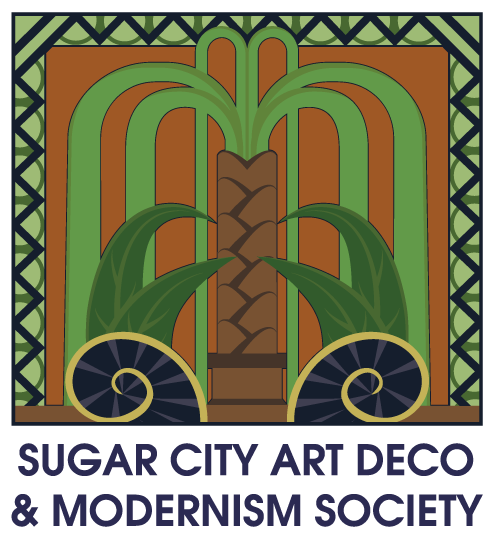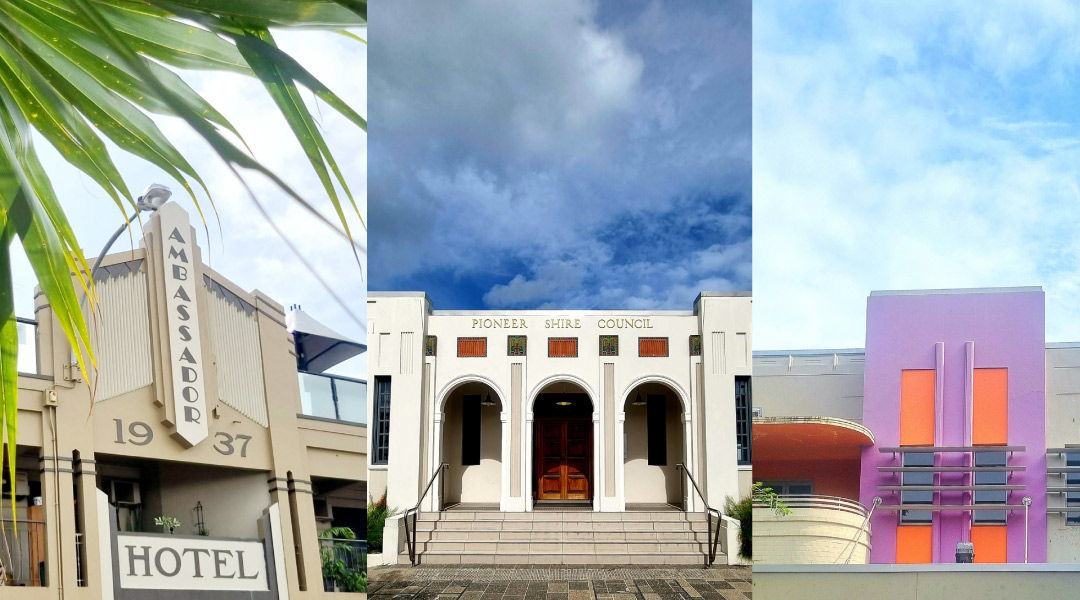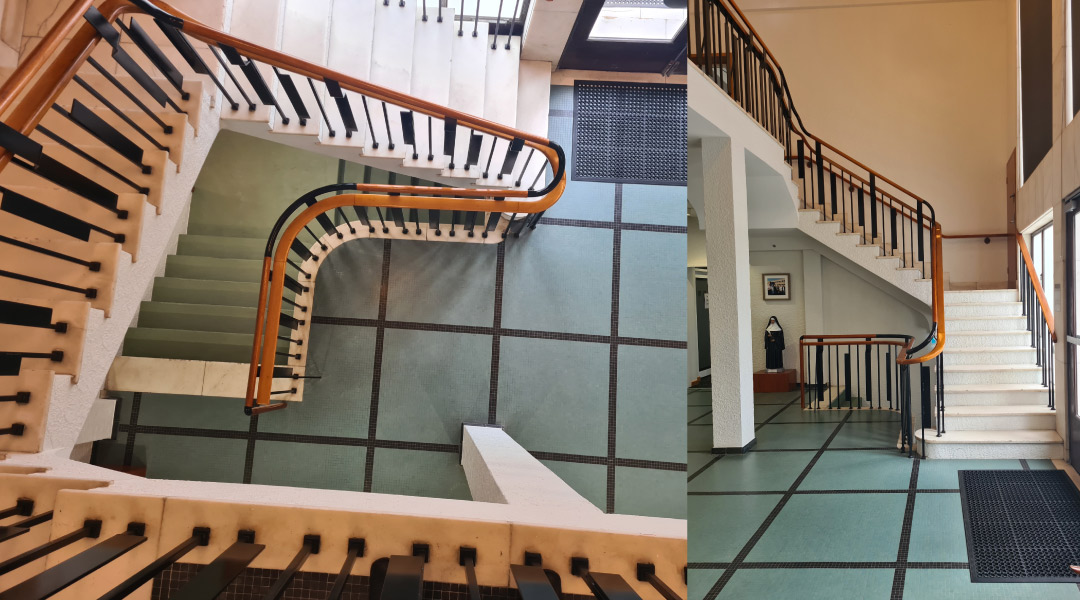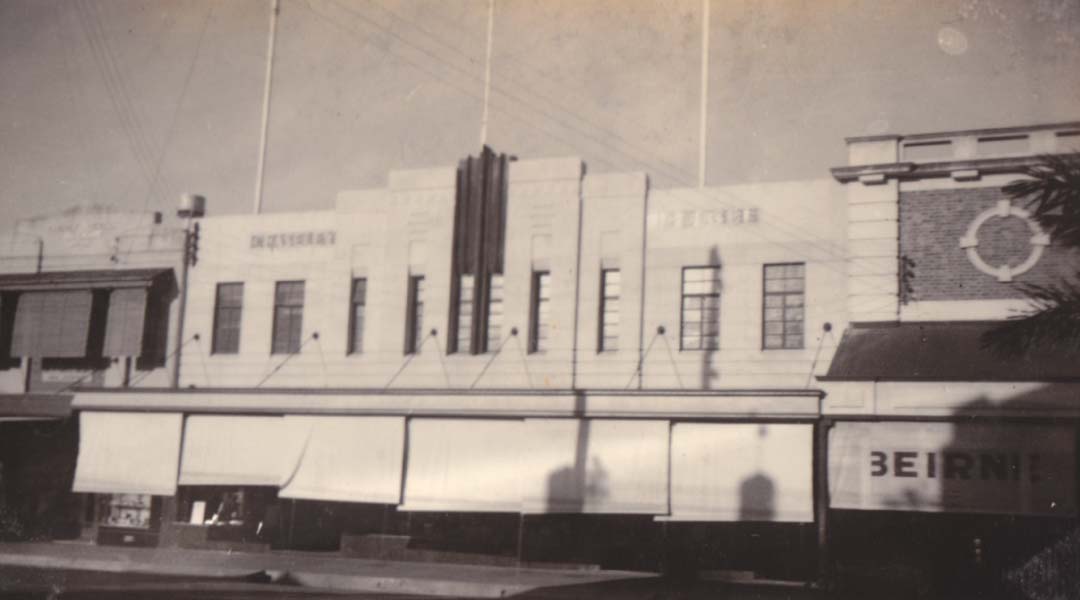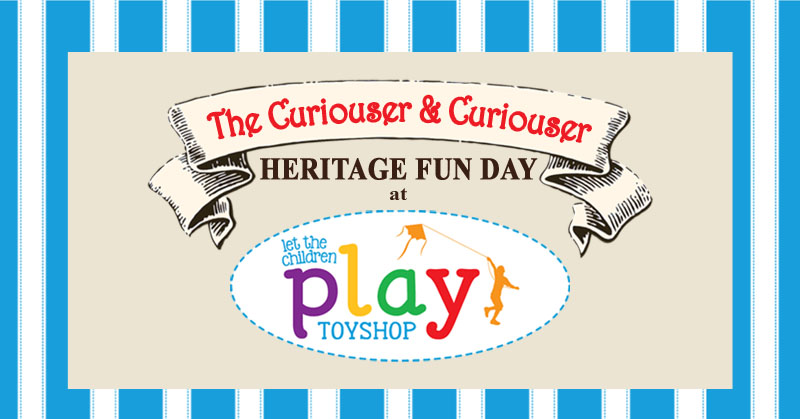Written by Nicholas McDougall of the Sugar City Art Deco and Modernism Society | Published March 2025
On the banks of the Pioneer River, surrounded by seemingly endless patchworks of sugar cane fields, is the city of Mackay, the gateway to North Queensland. Mackay Is home to the Sugar City art deco and Modernist society. The society is dedicated to promoting and preserving the art deco and interwar cultural heritage of the city and surrounding districts.
Mackay’s architecture is unusual when compared with that of other cities in Queensland. Although settled in the 1860s, most buildings in the city centre were designed and constructed within the first three decades of the 20th Century. Thus, Mackay has the best collection of art deco buildings in Queensland. Mackay is also fortunate to have a fantastic collection of Mediterranean style or, as its more well-known, Spanish mission style. This style was popular due to its associated Hollywood glamour and suitability for life in the tropics.
During the 1920s to 1930s, the suitability of the buildings for life in the tropics was at the forefront of local Architects, builders and politicians due to a series of unrelated events which combined to transform the appearance of the city.
These included several fires in 1915 and 1916, which destroyed many of the timber-framed commercial buildings on the main street of Victoria Street.
In 1918 a tropical cyclone crossed the coast just north of Mackay, bringing tidal surges of 2.7 meters in the centre of town. Over 20 people were killed, and widespread flooding ensued across Central Queensland. The force was strong enough to uproot large trees and destroy 80% of Mackay’s buildings. This led to the city council’s policy to replace all commercial frame timber premises with masonry structures for safety reasons.
There was a construction boom in the early 20th Century due to a population explosion that made Mackay the second fastest-growing city in Queensland for over a decade. The city’s economy was buoyant by steady sugar prices and co-operatively owned sugar mills, which led to money being retained within the community.
With a virtual ‘blank slate’ to work from, the gradual rebuilding of Mackay saw a new type of design aesthetic emerge – one we now recognise as Art Deco. This marked a significant departure from the quintessentially Queensland’ timber and tin’ aesthetic that had gone before. The two most prominent architects that embraced the Art Deco style in Mackay were local architects Harold V.M. Brown and Edwin R. Orchard.

The Mackay Post office building, River Street Mackay, remodel in 1938
Harold Vivian Marsh Brown was one of if not the most influential local architects in the history of Mackay. The majority of his architectural achievements are now recognisable landmarks of Mackay. Harold was educated at Brisbane Technical College from 1926 to 1930. After becoming an articled pupil of Cavanagh and Cavanagh architects in Brisbane. In 1932 HVM Brown, as he styled himself, returned to Mackay and set up his architectural practice from the family home on Brisbane Street.
Between 1932 and 1940, Brown designed at least thirteen buildings in Mackay, including several excellent examples of the Art Deco style. At the height of his career, Brown was associated with almost one-third of all building projects in Mackay. Some of the most recognisable designs of Brown are the Holy Trinity Anglican Parish Hall and the former Pioneer Shire Council building in Wood Street Mackay.
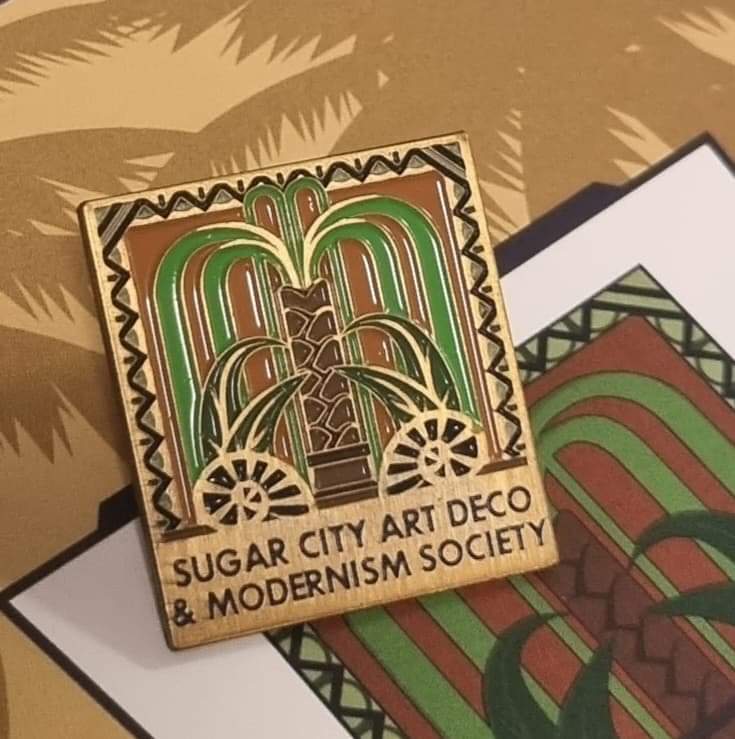
Sugar City Art Deco and Modernist society members pin, modelled from HVM Browns designs from the Pioneer Shire Council Building.
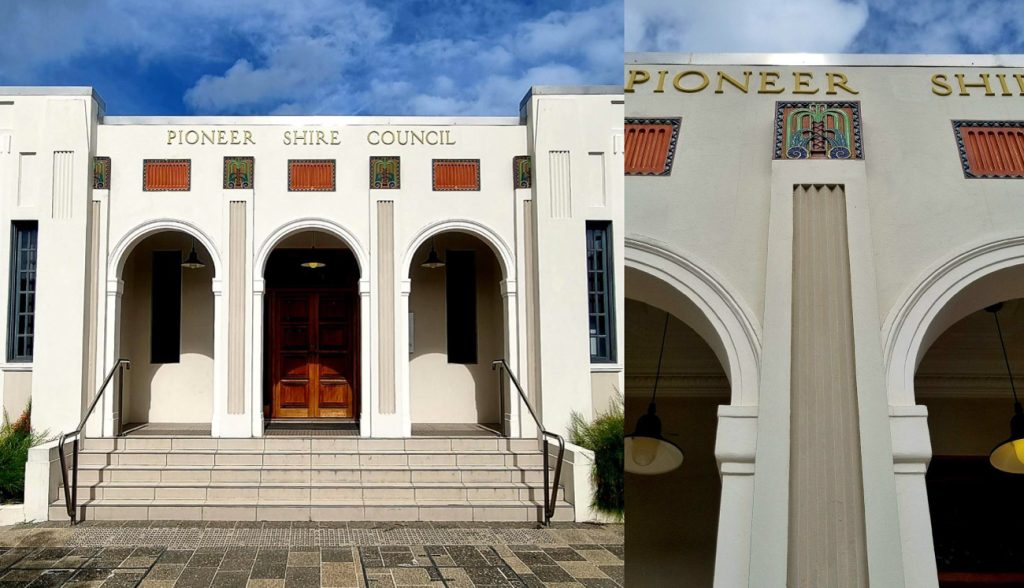
(Former) Pioneer Shire Council Building (A)

(Former) Pioneer Shire Council Building (B)
Edwin Roy Orchard was an established Sydney North Shore architect credited with designing the earliest Californian Bungalow-influenced houses in New South Wales between 1913 and 1915. Orchard relocated to Mareeba during the Depression and was involved in the tobacco industry until 1933, when he established an architectural practice in Cairns. He registered with the Queensland Chapter of the Royal Society of Architects in 1936. His designs are now some of the most iconic buildings in Mackay.
Other Key figures who contributed to the streetscapes of Mackay include local builder William Guthrie who was active from the mid-1920s to the 1940s. The services of other Queensland architects were also called upon, such as Brisbane’s Lange L. Powell, Bundaberg’s F.H. Faircloth and Townsville’s J.G Rooney.

The Ambassador Hotel, Sydney Street Mackay designed by Townsville Architect J.G. Rooney, built in 1937
The Sugar City art deco and Modernist society were established in 2019 as the centenary of the reconstruction of Mackay approached. Its mission is to increase public awareness of the Art Deco era by preserving and promoting its art, architecture, music, design, and other popular culture. In the short time the society has been active, it has established regular walking tours that explore the art deco heritage, the people and businesses that shaped our Sugar City in the early 20th Century, all in just one city block of Mackay.
References
- Heritage context study for the Mackay City Council B, Wright, A, Jacob, R, Dalton, 1999.
- Mackay Revisited. K, Kennedy. 2002.
- Butler, G & Associates, 1994, ‘Mackay Region Heritage Pilot Study, Mackay City Council.
- Daily Mercury, 1 Sept., 1936; 31 Oct., 1936; and 3 Sept., 1937.
- Meet one of Mackay’s most influential architects, N, McDougall, Sugar City Art Deco and Modernist Society, 2020.

Imperial Hotel Mackay
